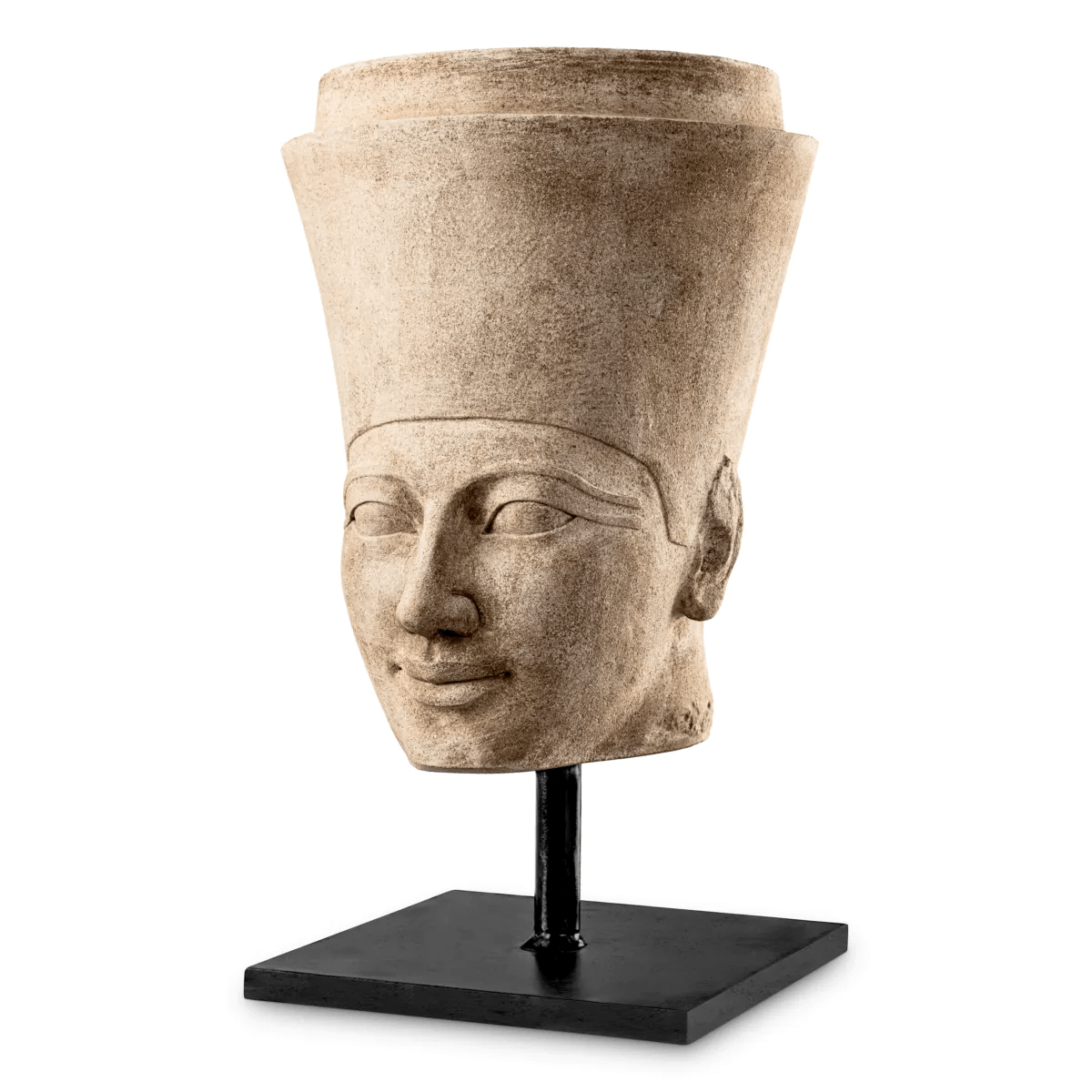
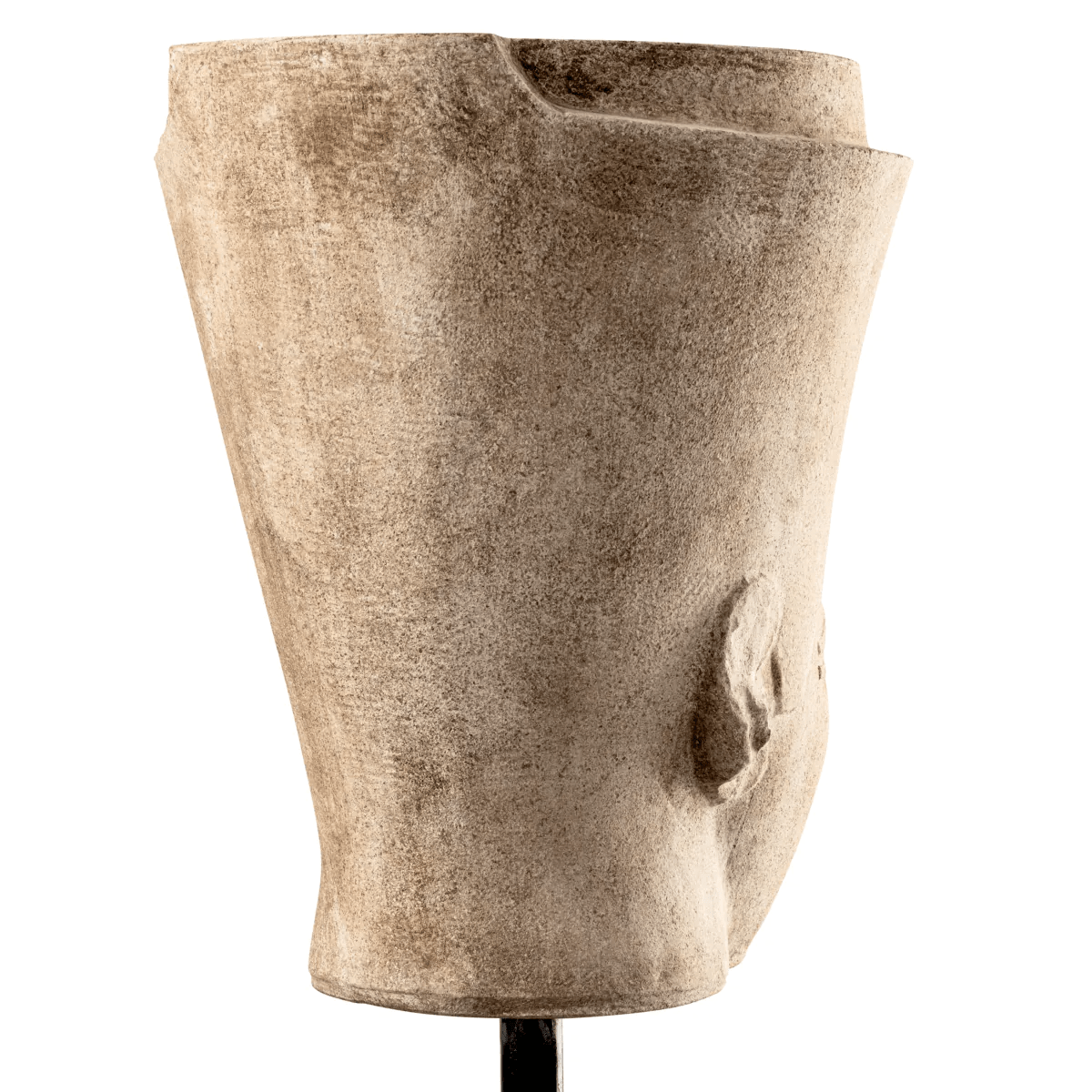
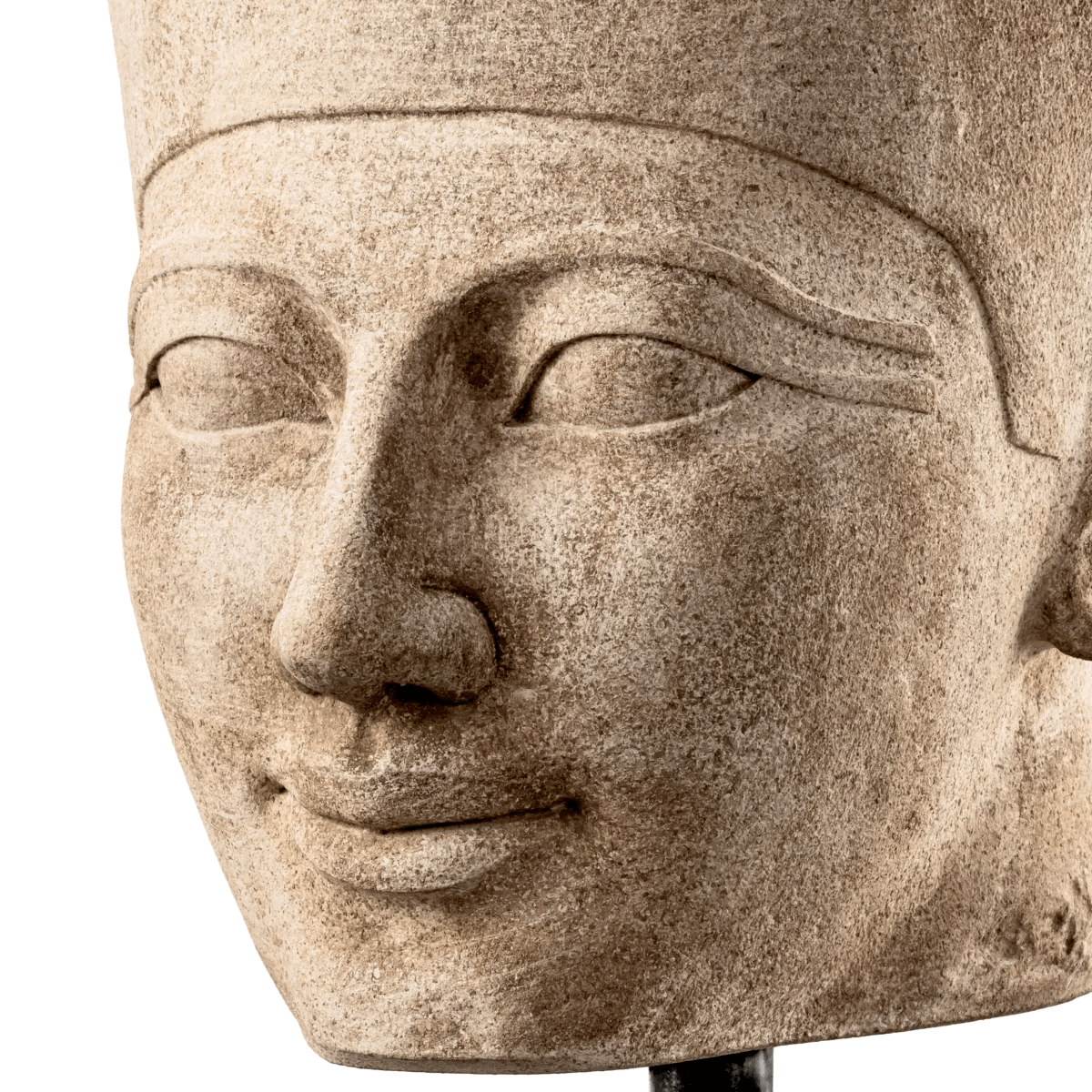

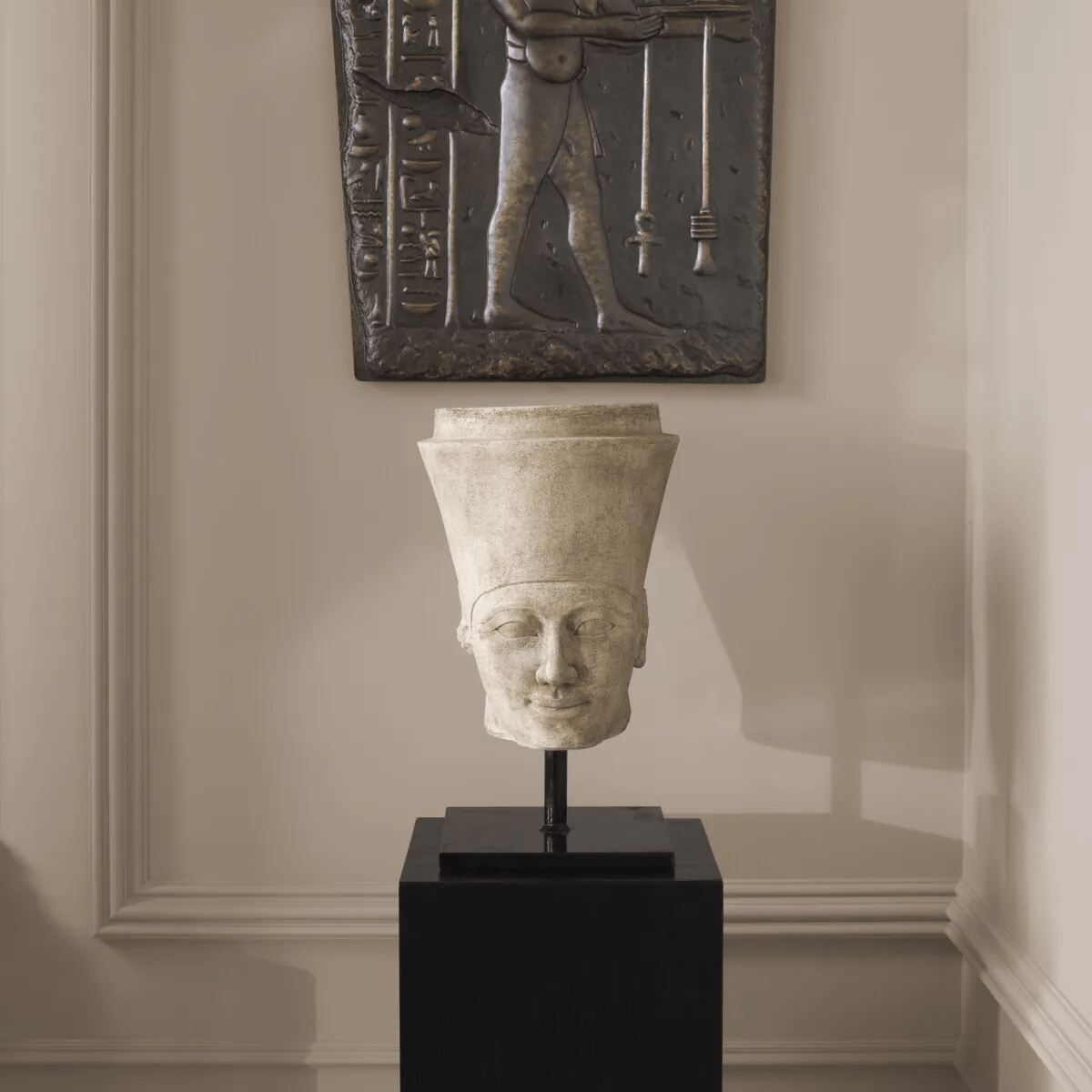
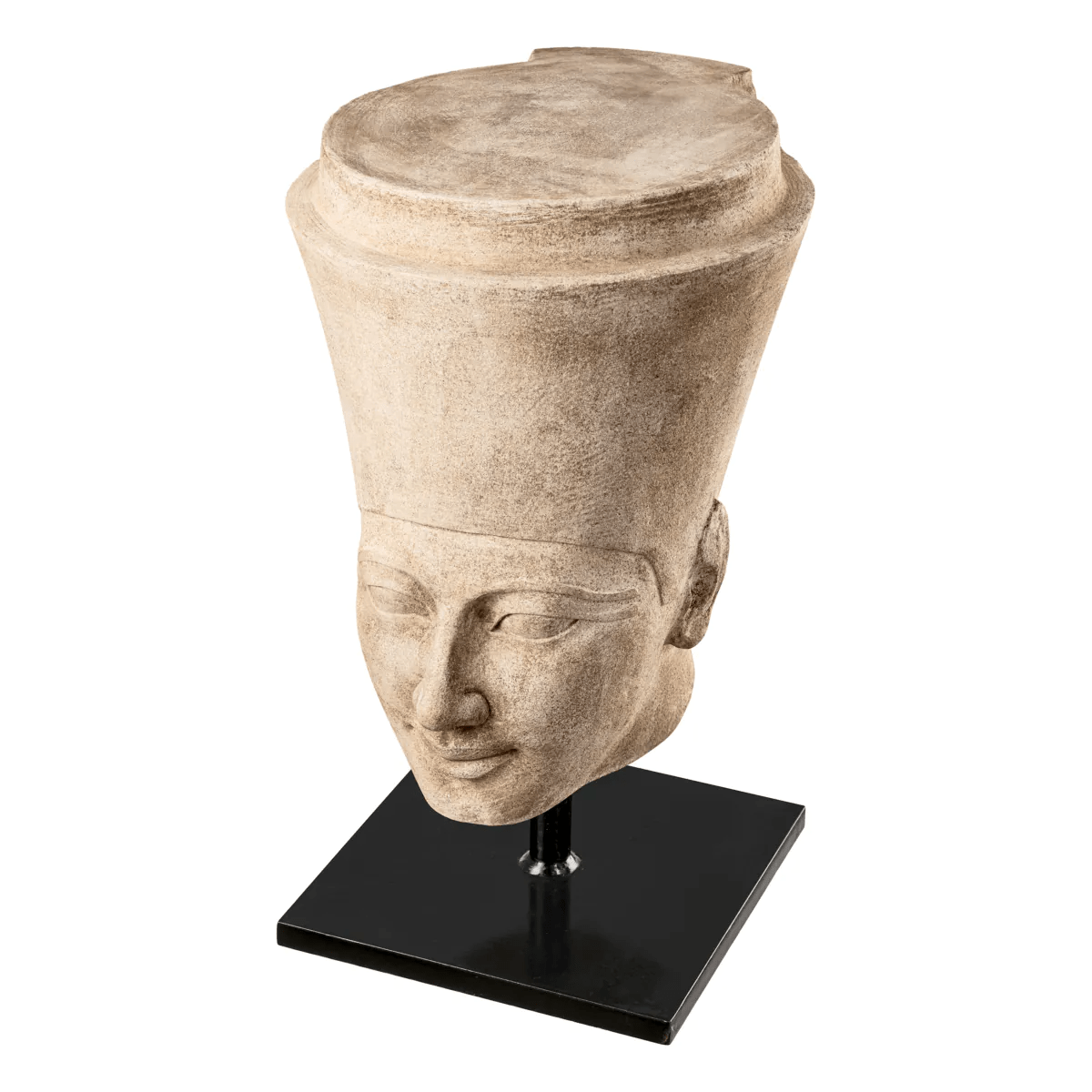
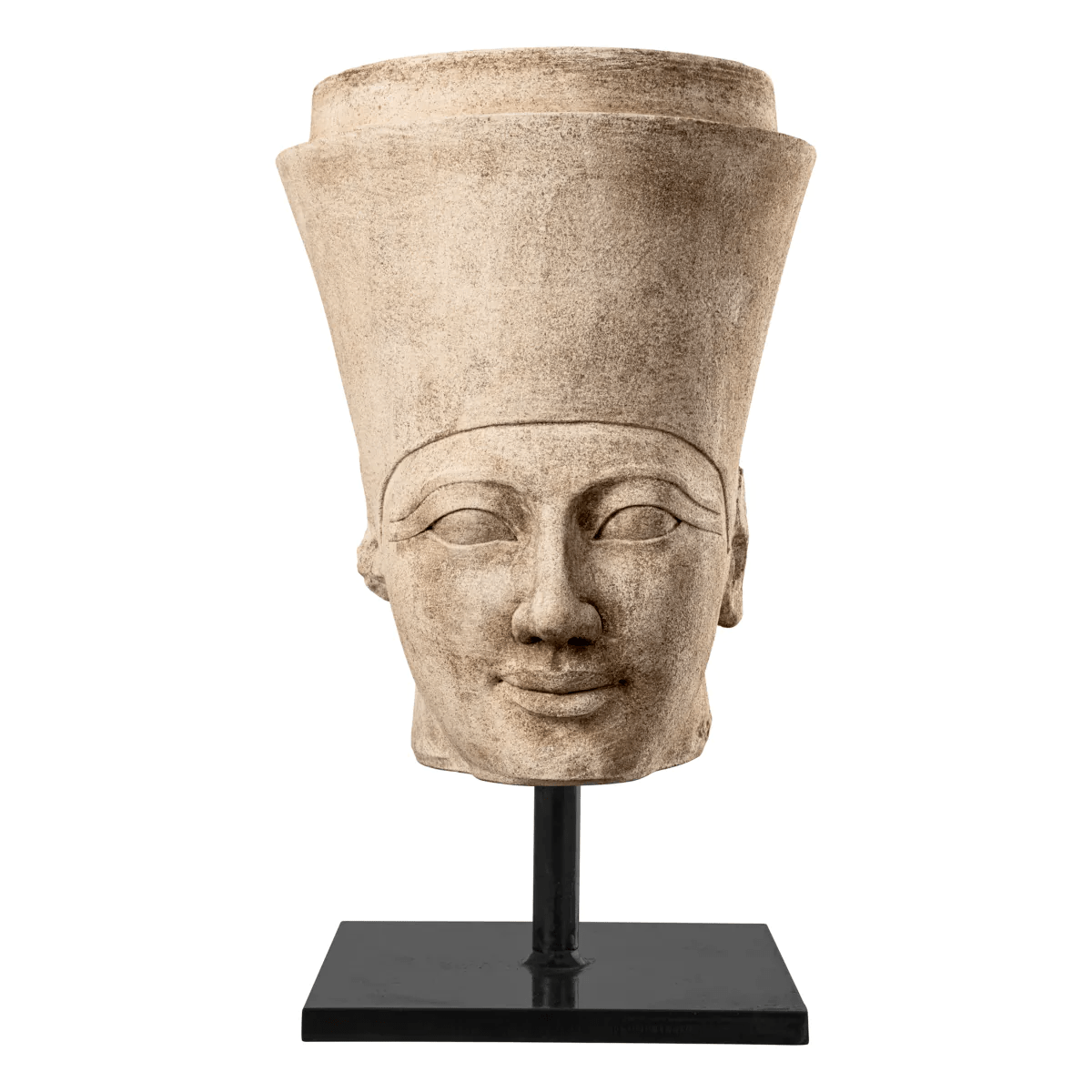
Bust of Hatshepsut sandstone finish
3867 €
The ‘Bust of Hatshepsut,’ inspired by The Met’s ‘Head of an Osiride Statue of Hatshepsut,’ is a remarkable piece of handcrafted artistry.
Crafted from sandstone and elegantly presented on a black metal base. Each of these stone busts is a unique creation, with variations in color and texture that enhance its individual charm. This piece pays tribute to the ancient beauty and grace of Hatshepsut, making it a captivating addition to any collection.
HISTORIC PROVENANCE
The Bust of Hatshepsut is inspired by the head of an ancient Egyptian Osiride statue of Hatshepsut (ca. 1479-1458 B.C.) at The Metropolitan Museum of Art in New York. The head, which wears a double crown referencing the union of Upper and Lower Egypt, is one of four Osiride figures that stood in the corners of the sanctuary of Amun in Hatshepsut’s funerary temple at Deir el-Bahri. This figure was found in the northeast corner, while two other heads adorned with the white crown of Upper Egypt, also in the Museum’s collection, were found at the southern end of the sanctuary. This elegantly crafted reinterpretation is hand carved in sandstone, which offers unique variations in color and natural veins, and is placed on a black metal base.
Specifications
Indoor/outdoor-Indoor use/dry locations onlyCare instructions
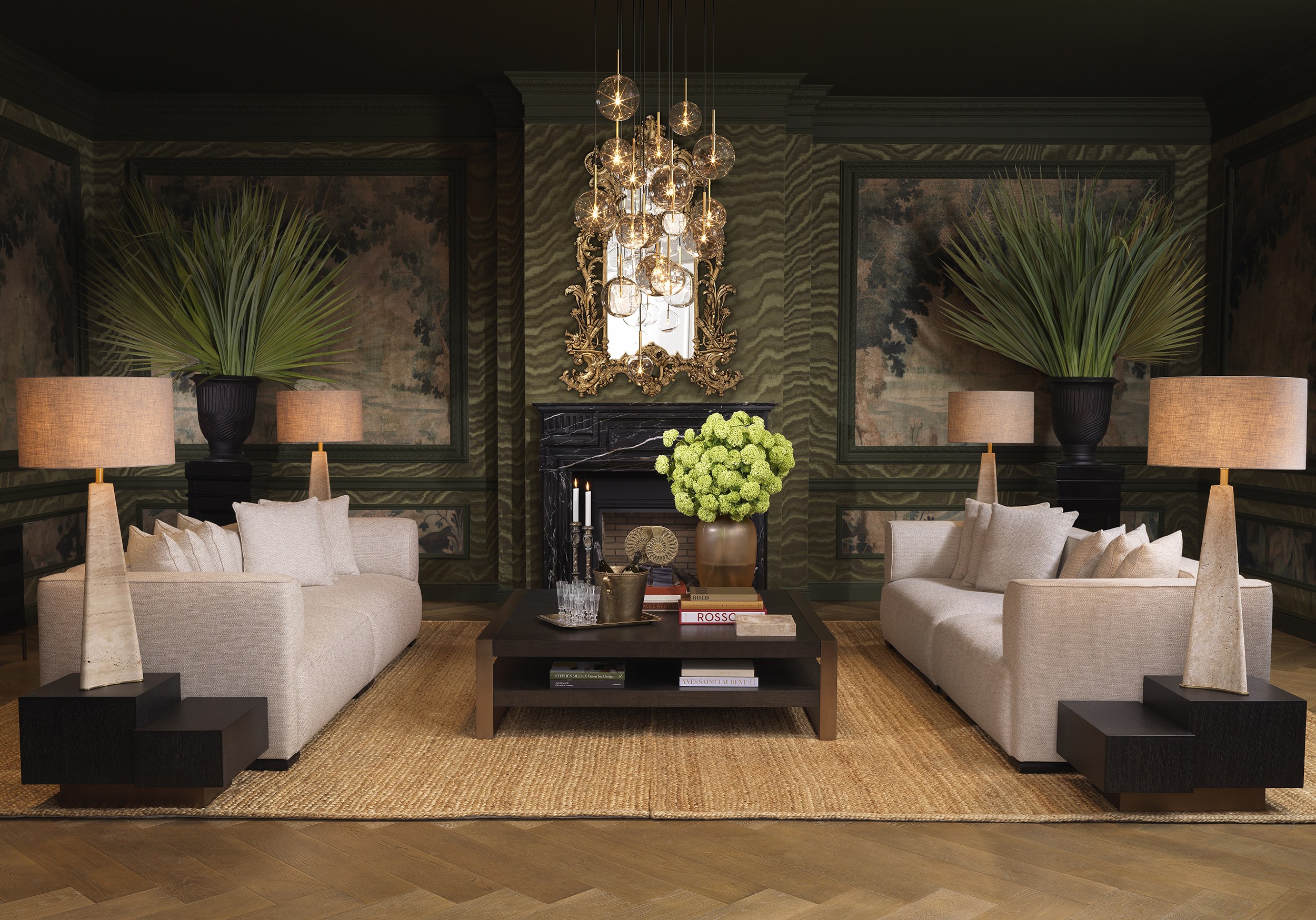
How to care for wood veneer
Veneer furniture is covered in a thin layer of real hardwood. Veneers are often used in high end furniture pieces and can be more costly than solid wood. Mid 20th century it became especially popular in interiors when teak wood was often used for Danish design furniture.
To fully enjoy your wood veneer furniture, please follow a few basic rules:
Cleaning and maintenance
Wood veneer requires gentle care to preserve the finish. Dust regularly and clean with a soft dry cloth.
Remove spills immediately as moisture can cause the veneer to peel off the surface. Prevent moisture from getting underneath the veneer by quickly and thoroughly cleaning up any spills. In case of water rings, rub the area with naphtha. Follow up with an application of oil or petroleum jelly to completely erase the mark.